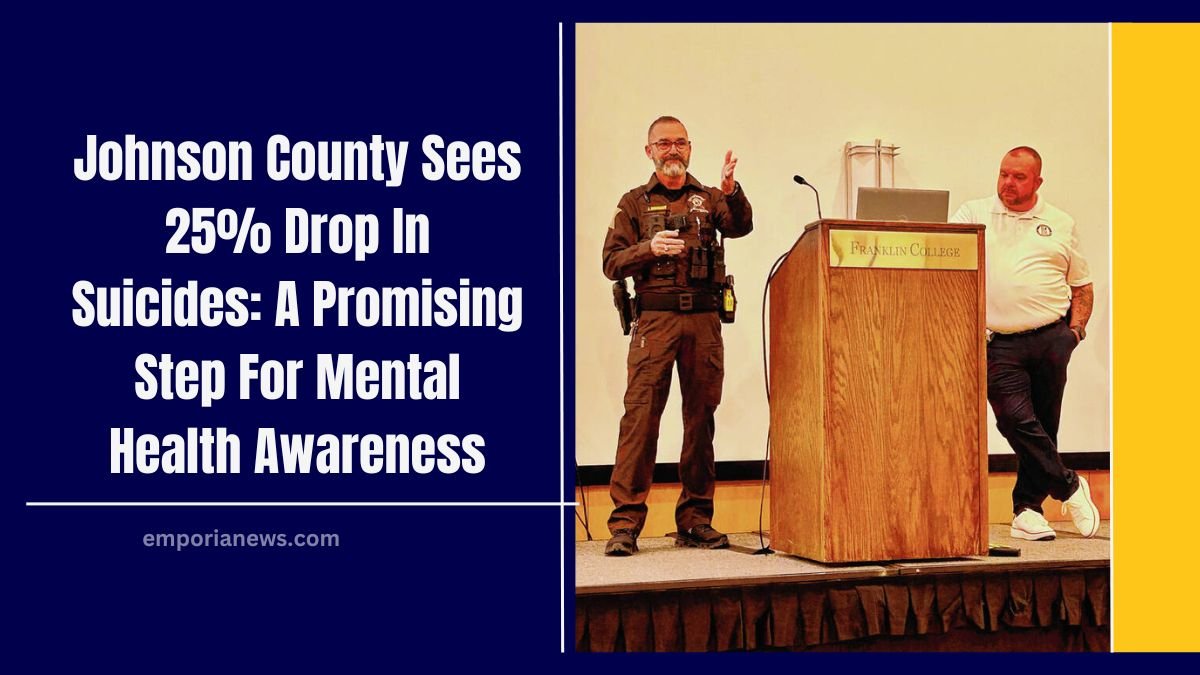Johnson County, Kansas, has witnessed a 25% decline in suicides from 2022 to 2023, a significant improvement after years of rising numbers.
While mental health experts are cautiously optimistic, they emphasize the importance of sustaining efforts to address the underlying causes and continuing to promote mental health awareness.
Key Statistics on the Decline in Suicides
Recent data reveals encouraging progress in suicide prevention across the county.
| Year | Number of Suicides | Percentage Change |
|---|---|---|
| 2022 | 122 | – |
| 2023 | 93 | -25% |
Key insights from the data include:
- The most significant decline was observed in men in their 20s, who accounted for half of the overall drop in suicides.
- Suicide rates had previously spiked from 94 deaths in 2021 to 122 in 2022, particularly among young adults aged 18 to 29.
While the decrease is promising, experts caution against drawing definitive conclusions. The factors influencing suicide trends are complex and multifaceted, and sustained efforts are needed to maintain progress.
Increased Use of Mental Health Services
One positive trend highlighted by county health officials is the increased use of mental health crisis hotlines. More people are reaching out for help when struggling, which is often an early indicator of reduced suicide rates.
Efforts to Promote Help-Seeking
- Crisis Hotline Awareness: The county has actively promoted the hotline through community messaging and public campaigns.
- Normalization of Mental Health Support: Outreach programs emphasize that seeking help is not only acceptable but encouraged.
Such initiatives have likely contributed to the improved numbers, underscoring the importance of accessible mental health resources.
Addressing Stigma with Programs Like Zero Reasons Why
One of the most impactful programs in Johnson County is Zero Reasons Why, launched in response to a wave of suicides in 2017-2018 within the Blue Valley School District. The program focuses on:
- Open Communication: Encouraging open discussions about mental health and suicide.
- Judgment-Free Community Support: Building a supportive network where individuals feel safe sharing their struggles.
- Suicide Prevention Education: Consistent education on recognizing warning signs and seeking help.
Community Engagement Through Zero Reasons Why
- Yellow-Out Events: Students wear yellow T-shirts with the campaign logo and sign banners with personal messages about mental health.
- Story Sharing: Encouraging teens to share their experiences fosters an environment of understanding and support.
These efforts have not only destigmatized mental health struggles but also empowered young people to recognize warning signs in themselves and others.
Focus on Firearm Safety
The latest report identified firearms as the primary method of suicides in Johnson County. Addressing gun safety is now a critical component of the county’s suicide prevention strategy.
Gun Safety Measures
- Public Education Campaigns: Educating gun owners about safe storage practices.
- Collaboration with Local Groups: Partnering with community organizations to distribute gun locks and raise awareness.
- Focus on High-Risk Groups: Targeting outreach efforts toward demographics most affected by firearm-related suicides.
A Holistic Approach to Suicide Prevention
While young adults and teens have been a primary focus, experts stress the importance of addressing mental health across all demographics. Suicide is a leading cause of death for individuals in various age groups:
- Ages 10-14 and 25-34: Second leading cause.
- Ages 15-24: Third leading cause.
- Ages 35-44: Fifth leading cause.
Key Prevention Strategies
- Early Intervention: Identifying and addressing mental health issues before they escalate.
- Community Awareness: Building a culture of understanding and support through consistent outreach.
- Comprehensive Support: Offering accessible resources for all, regardless of age or background.
Cautious Optimism Among Experts
Health experts, including county epidemiologist Gabe Hawkins, have welcomed the drop in suicides but urge caution.
Why Caution Is Necessary
- Year-to-Year Variability: Suicide rates can fluctuate, and a single year’s improvement may not indicate a long-term trend.
- Complex Causes: Suicide is influenced by a range of factors, including economic conditions, social support systems, and individual circumstances.
Shana Burgess, the director of prevention at Johnson County Mental Health Center, echoes this sentiment, emphasizing the need to sustain prevention efforts across the entire community.
The 25% decline in suicides in Johnson County is a testament to the effectiveness of targeted mental health initiatives, such as crisis hotline promotion and the Zero Reasons Why campaign.
Increased awareness, early intervention, and destigmatization of mental health struggles have likely contributed to this positive trend.
However, experts remain cautious, acknowledging that continued vigilance and community engagement are essential to maintaining and building upon this progress.
By addressing gun safety, expanding outreach to high-risk groups, and fostering a culture of openness and support, Johnson County can further solidify its efforts to reduce suicides and support the mental health of its residents.
While the numbers are encouraging, the focus must remain on sustained prevention, compassion, and care for individuals in need. Together, the community can work toward a future where seeking help is the norm and suicide is no longer a leading cause of death.




